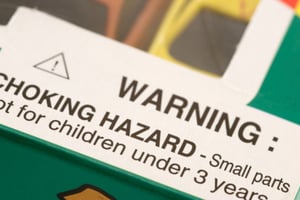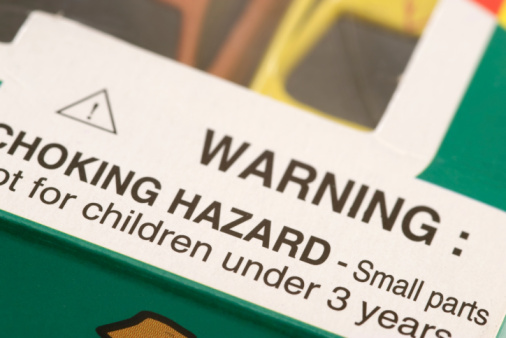Children are curious, and young ones often use their mouths to explore what’s in their world. Because of that, according to a study of children aged one through three, it’s easier than you think to overlook choking hazards. In the study, researchers showed ten items commonly found in households to parents, and asked them to identify which ones posed a problem. And, parents were wrong 18 percent of the time.
So, to help you keep your family safe, here are surprising choking hazards to baby proof/toddler proof.
Let’s say you decorate your refrigerator with cute little magnets, perhaps one that anchor your children’s artwork—or are shaped in letters to help your child to recognize them as a foundation for reading. Unfortunately, if your baby or toddler is in the habit of putting everything into his or her mouth (and this is quite common), it’s a choking hazard.
Here’s another one: latex balloons. In fact, since 1973, more than 110 children have actually choked to death while blowing up or chewing on balloons made of latex. When swallowed, they can conform to the shape of a child’s throat and block the airway. To protect your child, buy Mylar balloons instead and, if your child is around latex ones, supervise him or her closely. Don’t allow your child to blow up latex balloons until he or she is eight years old—and, if one of these balloons pops, immediately throw away all the small pieces.
Plus, as you baby proof a space, don’t forget any purses, backpacks, cosmetic bags or suitcases in the room as they could be chock full of surprising choking hazards. These could include pen caps, matches, safety pins, change, and more.
Don’t Forget About Food
One easy culprit to overlook is what your child eats. One toddler, for example, needed surgery to remove a cashew from his windpipe. And, when small pieces of food get passed down to your child’s airway, he or she might cough or wheeze in a way that suggests illness—which covers up the fact that choking is involved.
In fact, emergency rooms treat more than 10,000 children each and every year because of choking; and, although in many cases doctors can help, about 20 percent of these children die because of what was swallowed. Their airways, after all, are the size of their pinky fingers, making them easy to get blocked.
If your child is under the age of five, use special care when offering him or her these foods:
- Cheese sticks
- Chewing gum
- Chunks of food (meat, cheese, peanut butter, raw vegetables)
- Dried fruit
- Grapes
- Hard or sticky candy
- Lollipops
- Hot dogs
- Nuts
- Popcorn
- Seeds, such as pumpkin or sunflower seeds
This bulleted list is quoted directly from ConsumerHealthDay.com. If your child chokes and can’t catch his or her breath, call 911, the site says, and also perform the Heimlich maneuver. Take your child to the doctor afterwards, even if all seems fine.
Finally, the Cleveland Clinic offers tips on making food safer for your child to eat. First, be sure to cut the food into small pieces, small enough that they can’t get stuck. The best size is one fourth of the diameter of a hot dog or large carrot. It can also help to cut the food into triangular shapes to allow air to pass through even if the food gets stuck in your child’s throat.
Also, insist that your child sits down and focuses while eating. He or she must chew thoroughly, as well. When these strategies are followed, “risks of choking goes down significantly.”




